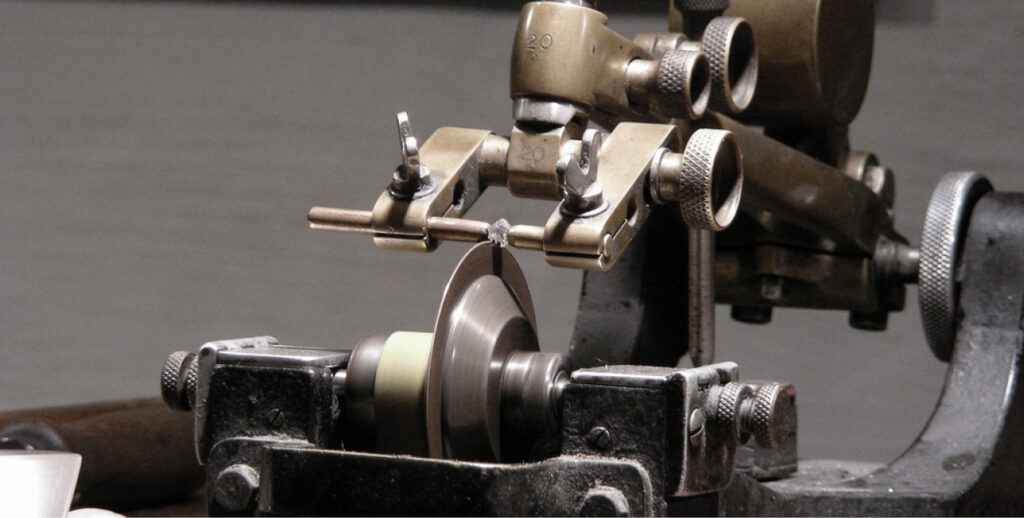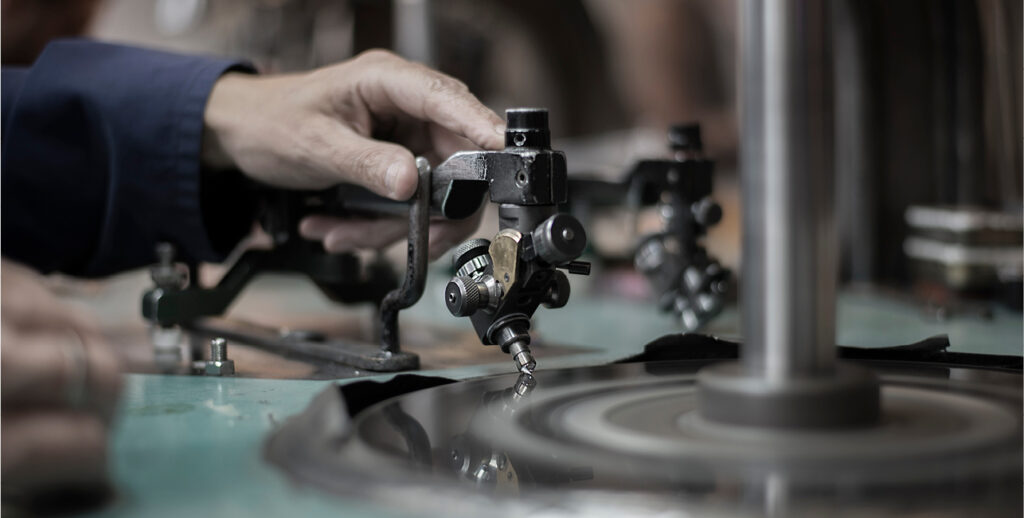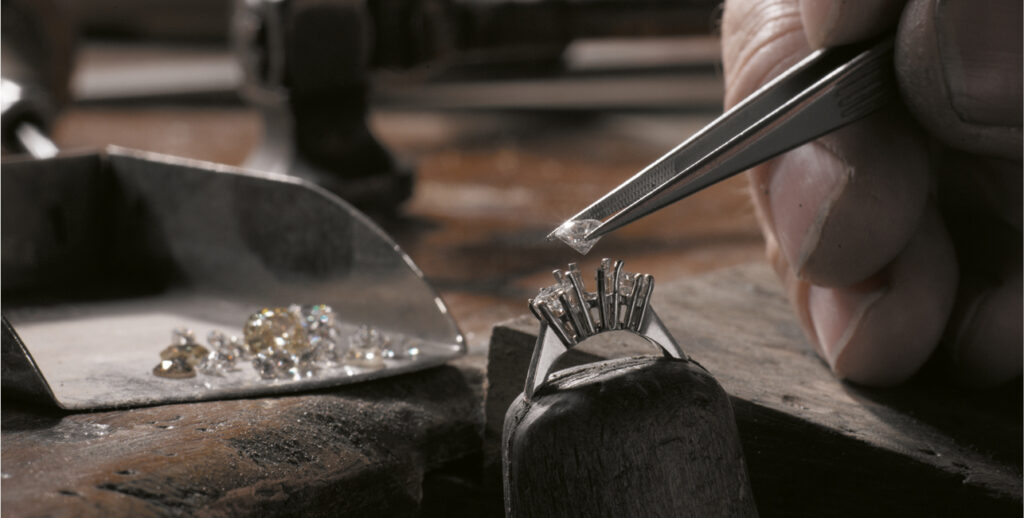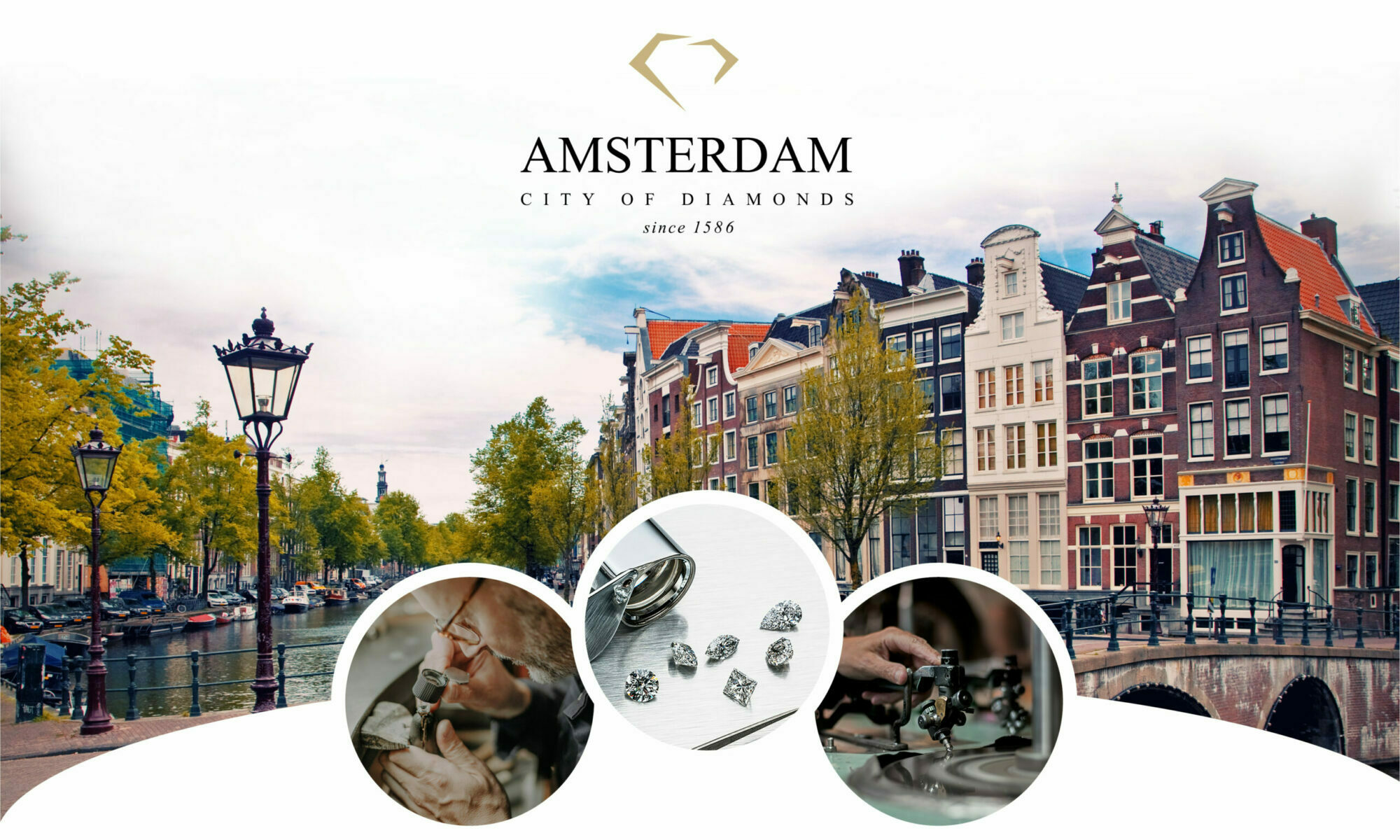The diamond polisher starts the polishing process by carefully studying the rough stone. This is the way in which it is determined how the stone can best be cut in order to maintain the greatest weight. The rough shape determines the most efficient way to obtain the highest achievable purity and cut with the least loss of material.
Cleaving/Sawing
The rough stone is divided into several pieces. If there is an irregular crystal shape, the stone is often cleaved. This is similar to splitting wood, where the natural grain is followed. If the stone has a pure crystal shape of an octahedron, then it will first be sawn into two pieces. A more modern method for this process is done with a laser. The sawing is done using a phosphor bronze blade impregnated with diamond powder. Sawing is a long process which can take up to 8 hours.

Cutting
When a round cut, such as a brilliant, has been chosen, the stone will be cut or rounded. This is the rounding of the stone. This is done by clamping the stone in a lathe and rotating it at 1700 rpm. By pressing an industrial diamond against the diamond, a round shape is created (girdle).

Polishing
After cutting, the facets are applied. This is done using a rotating cast iron disc. The pores of the disc are impregnated with diamond powder and olive oil. The disc rotates between 3000 and 4000 revolutions per minute. The diamond polisher begins by setting up the cross work. Then these facets are doubled to form an octagon. After this, the stone is brushed. Here it is important that all facets are cut at the correct angles to prevent any loss of light. It is also important that all facets are polished as smooth as glass for a maximum reflection of light. Throughout the polishing process from a rough stone to a brilliant, a 60% weight loss is not uncommon.

Setting the diamond
Besides the shape and quality of a diamond, the setting is also very important. A setting is the way in which a diamond is firmly clasped in a ring, necklace or other jewelry piece. It is also important that the setting allows light to enter the diamond.

